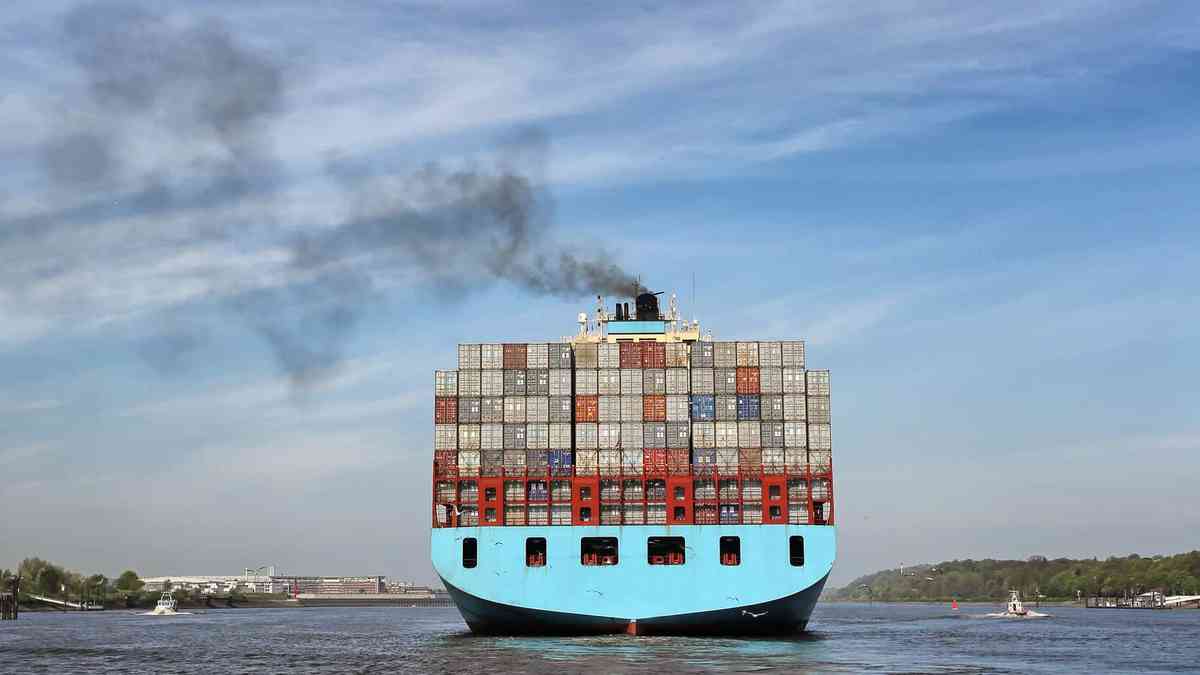On Jan. 1, 2020, new emissions standards from the International Maritime Organization (IMO), designed to curb emissions produced by maritime shipping, will go into effect. The new standards will further limit the acceptable levels of sulfur in ship fuel.
The standards are likely to have a profound impact on the global logistics industry, as nearly all – more than 90% – of the world’s trade remains carried by sea.
What the new standards change
The new rules will further limit the acceptable sulfur content of marine fuel, ratcheting it down from the existing 3.5% to 0.5%. As a point of reference, most current marine fuel averages a sulfur content of around 2.7%.
The change to sulfur limits will be the first the IMO has made since it established the original 3.5% limit in 2005.
The rule change isn’t complicated, but it will likely have wide-reaching effects on the logistics industry, fuel production and global trade. Experts from the oil and gas industry have gone as far as describing the new rules as “the biggest change in oil market history,” according to CNBC.
The new standards will require the shipping and cruise industries to turn from cheaper, dirtier crude oil to products that are cleaner and less polluting, but more expensive – or face fines levied by the IMO.
The IMO did not change its regulations beyond the sulfur limit. As a result, ships can continue to use high-sulfur fuel, so long as they use an exhaust cleaning system to scrub their emissions, or if they mix that fuel with another variety that brings the total sulfur content below the 0.5% limit.
Why the IMO changed its standards
Experts predict the reduction in sulfur content to reduce the amount of sulfur oxide produced by global maritime transit. They say it should improve the health of those living in communities near ports, major shipping routes and coasts, which are typically the most impacted by maritime pollution and emissions.
In its reasoning for the change, the IMO cited a study which predicted cutting emissions of sulfur oxide could prevent more than 570,000 premature deaths between 2020 and 2025.
The same study estimates that the cost of the rule change will be approximately $30 billion per year, or around $277,000 per prevented death.
Residents in the coastal regions of India and China, where shipping lanes are densest, can expect to see some of the most significant health benefits.
The fuel change is substantial, but not the most restrictive standard on sulfur content the IMO imposes. Ships operating in emission control areas established by the IMO – which include the Baltic Sea and the area around Puerto Rico and the U.S. Virgin Islands – already need to comply with a 0.1% sulfur content limit.
Some shipping companies have expressed worries about their ability to comply with the new standards, but the IMO has been steadfast that the regulation will become active on Jan. 1, 2020.
How shipowners are responding
In the same way they can manage product shipping on land, logistics companies will need to turn to new technology – and possible fuel types – to reduce their production of sulfur oxide and come into compliance with the new IMO regulations.
The rule change leaves shipowners with a few different options for compliance, including switching from high-sulfur fuel to marine gas, very low-sulfur fuel or liquefied natural gas, as well as systems that clean engine exhaust.
Major oil producers BP and Royal Dutch Shell have already announced that they are producing very low-sulfur fuels that will fall under the 0.5% limit. The IMO has prepared, however, for shortages of compliant fuel at smaller ports with fewer available resources.
Marine energy and shipping consultant Adrian Tolson predicts most shipowners will switch to marine gas, natural gas or low sulfur-content oil, while a smaller portion – around 20% – will install exhaust gas scrubber systems to help control their emissions of sulfur oxide.
Shippers will need to begin planning now, if they haven’t already. By the time the IMO starts enforcing its regulations in early 2020, shipping companies should already have identified alternative fuel sources that will bring them into compliance with these new standards.
While the shipping and cruise industry will likely be the most impacted by the rule change, ships of all sizes will need to comply with the regulation. They will also need to meet the standards regardless of whether their voyage is international.
How the new IMO standards may change maritime shipping
The new rule change isn’t complex but is likely to cause significant changes in the maritime shipping and oil and gas industries. Shipowners and energy companies have been preparing for the shift by looking to new fuel sources and equipment that could reduce their production of sulfur oxide.
The new standards will be costly to the shipping industry – but, if successfully enforced, could save hundreds of thousands of lives.
In the future, as sustainability, environmental stewardship and climate change become more pressing priorities, these sorts of rule changes may become even more prevalent.












Cyber security software
This is an amazing blog.
GPS tracking system
Thanks for this blog this is very informative for us. Please keep sharing this type of blog.
LogyTrak
useful article.